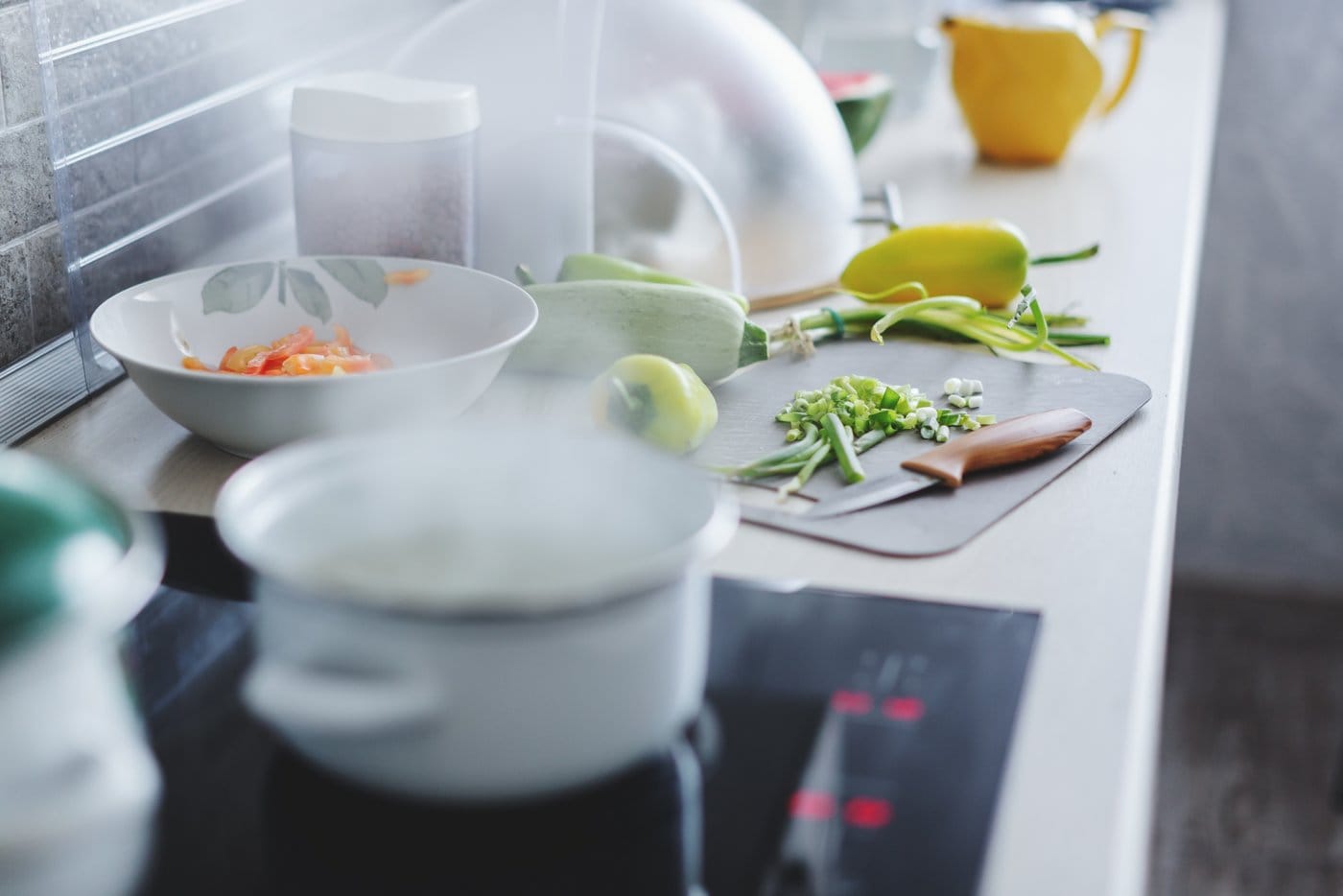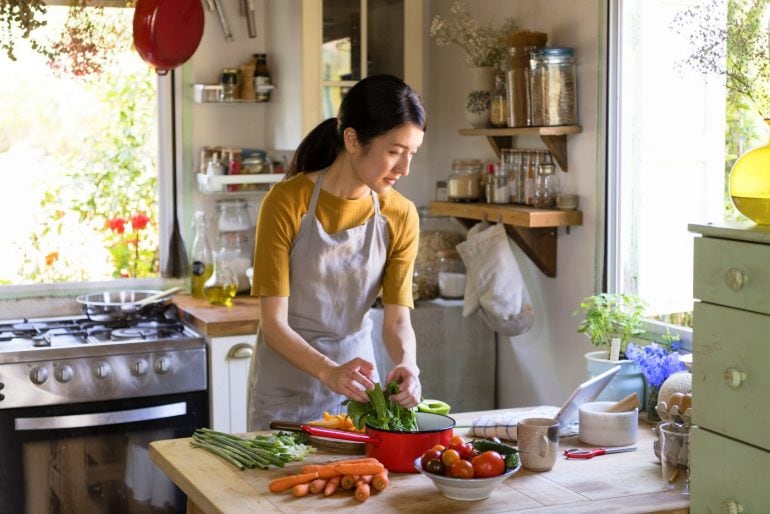Simple mistakes in the kitchen can easily cause cuts, burns and other injuries. Here’s a look at the products and gadgets that are most likely to be problem, and some manageable ways to avoid them.
“It’s easy to make a mistake in the kitchen when you’re in a rush or in a post-workday haze,” said Lisa Lee Freeman, former editor-in-chief of ShopSmart, from Consumer Reports. “But there are simple things you can do to avoid landing in the hospital.”
The magazine ranked the kitchen products that send the most people to the emergency room. In descending order, the most dangerous items were knives, ranges, cookware, slicers and choppers, microwaves and blenders.
Below are some simple ways to avoid getting hurt when using these products and appliances. Also important: Always keep a fire extinguisher with a minimum 5-B:C rating on hand.
Knives: Dull knives are more dangerous than sharp ones, so keep knives sharpened and stored in a block.
Cutting boards: Use a cutting board that doesn’t have a slippery surface, and place a damp towel under it to keep it from moving.
Ovens/ranges: Install an anti-tip bracket to secure the unit in place to keep it from falling forward — especially on to a child. Also, never place heavy roasts or other food on an open oven door.
Grease fire: If a grease fire starts, smother the flames with a cookie sheet or lid for 10 to 15 minutes to make sure the fire is completely out.
Slicers, choppers & food processors: Don’t leave motorized models on for a long time, as they can overheat, and never reach into a slicer or chopper. Many parts, including blades, are dishwasher safe, so don’t hand wash them. (Check your manual for any specific cleaning instructions.)
Avoid burns: Always use dry oven mitts to pick up hot pots and pans, and be aware that handles and lids can also get very hot. When opening pots or the oven, beware of steam.
Microwave ovens: Be careful when removing a wrapper or cover from microwaved food, because steam can escape and cause a nasty burn. Let food cool a minute or two before removing it from the microwave, and consider doing so with potholders and holding the dish evenly with two hands.
Hot water: Boil water on the stove — not in the microwave. Why? Water heated in a microwave can become “superheated” and erupt violently without warning. (Find out more about that here.)
Blenders: Most blenders don’t have safety interlocks, so don’t reach inside, especially if it is plugged in.
Cleaning blades and blenders: To clean blades without touching them, add hot water and a bit of dishwashing liquid to the blender container and let it run on high for a minute, then rinse. If the blender has a container that disassembles, wash the parts in the dishwasher (unless the manufacturer says otherwise), because the rubber gasket can harbor bacteria.

Beware! 17 more kitchen dangers
Children in the kitchen should always be actively supervised — in sight and in reach at all times — whether they are helping an adult cook or simply watching.
Cherie Sage, director for Safe Kids Kansas, reminds parents and caregivers to check their kitchens for preventable hazards and to supervise children at all times in the kitchen. “The most important safety precaution in the kitchen is constant, close, attentive supervision,” she says.
Here are tips from SKK, as well as the Tennessee Valley Authority and the Missouri Department of Public Safety.
1. Keep things that can burn, such as dishtowels, paper or plastic bags, oven mitts, wooden utensils and curtains at least three feet away from the range top.
2. Keep your cooking area clean. Do not let grease build up on the range top, toaster oven or in the oven.
3. Always stay in the kitchen while cooking on the range, especially when frying food.
4. Keep pets off cooking surfaces and nearby countertops to prevent them from knocking things onto the burner.
5. An ungrounded faulty appliance, such as an electric toaster, used near a grounded kitchen sink can be dangerous. Do not handle or operate appliances when your hands are wet or when the appliances are on wet surfaces, such as a countertop that has water on it. Receptacles within six feet of a kitchen sink must have a ground fault circuit interrupter.
6. A major hazard in the kitchen is poison. Store potentially hazardous goods, such as cleaning products and alcohol (including many baking extracts), in locked cabinets out of reach.
7. Avoid overloading a receptacle or an electrical circuit. Fires can occur when overloaded wires become hot. Most receptacles are designed for two plugs only.
8. Do not use an extension cord for cooking equipment. Cooking equipment can cause the circuit to overload, which could start a fire.
9. Never hold a child while cooking or carrying hot items. “Burns from spills, steam, hot surfaces, and flame can be especially devastating,” says Sage. “Young children have thinner skin than adults, so they burn more severely and at lower temperatures.”
10. Cook on back burners whenever possible, and turn all handles toward the back of the stove.
11. Keep hot foods and liquids away from the edges of counters and tables. Be especially careful around tablecloths, as children can pull hot dishes down onto themselves.
12. Tie up the electrical cords of small appliances so toddlers cannot pull a toaster or microwave down from a countertop.
13. If you are simmering, baking, roasting, or boiling food, check it regularly, remain in the home while food is cooking, and use a timer to remind you that you’re cooking.
14. Stay alert at all times while cooking. Do not cook if you have been drinking alcohol or have taken medicine that makes you drowsy.
15. Wear short, close-fitting or tightly-rolled sleeves.
16. Choose the right cooking equipment and make sure that it is used properly. Do not use equipment that has not been tested and approved, and make sure that you follow the manufacturer’s instructions when installing and using the equipment.
17. Carbon monoxide detectors should be installed to alert everyone to get out of the house in the event of a buildup of the odorless toxic gas given off by fuel-burning appliances.








